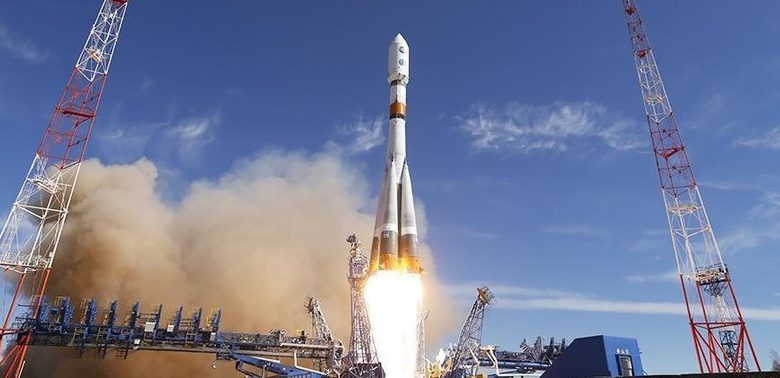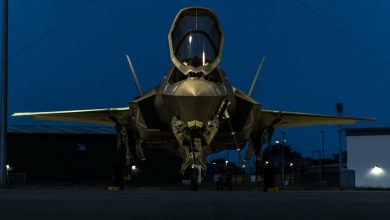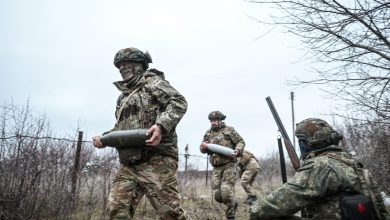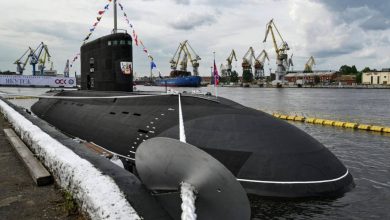Russia’s Space Agency to launch an Iranian Satellite into orbit

Moscow is gearing up to launch a satellite on behalf of the Islamic Republic of Iran. The Russian Roscosmos space agency revealed its August 9 launch date nearly two weeks after President Vladimir Putin visited Iran.
Iran to Have a Spy Satellite
Dubbed “Khayyam,” the satellite is expected to improve Tehran’s ability to spy on military targets across the region. According to reports, however, the Khayyam will first be utilized by Russian forces amidst its ongoing invasion of Ukraine. The joint effort by the two U.S. adversaries is cause for concern, considering the dual-use applications a satellite provides. In addition to its increased scale of satellite launches in recent months, Tehran has been ramping up its missile development. The regime’s efforts on these fronts indicate a worrisome outlook for the U.S. and its allies.
Earlier this week, Roscosmos released a statement outlining the details of the approaching launch. “On August 9, 2022, a Soyuz 2.1B rocket is scheduled to be launched from the Baikonur Cosmodrome … to put the Khayyam remote sensing device ordered by the Islamic Republic of Iran into orbit. The Khayyam device was designed and manufactured at enterprises that are part of the state corporation Roscosmos.” The Russian company has asserted that the satellite will enable Iran to receive “accurate spatial data,” allowing the regime to enhance its monitoring of water resources, agricultural productivity, among other domestic purposes. However, the technology would allow the regime to monitor its borders and potentially spy on its neighbors. Considering Iran’s escalatory behavior in the region in recent months, this outcome appears very probable.
Russia and Iran Getting Closer
The upcoming launch marks the latest cooperative effort between Tehran and Moscow. The two countries share an anti-American hegemony outlook and are currently experiencing a more isolated position among global powers. Following the U.S. withdrawal from the Joint Comprehensive Plan of Action (JCPOA) under the Trump administration in 2015, the U.S. has levied sanctions targeting the regime. Most recently, the U.S. sanctioned a network of Iranian petrochemical producers and front companies in the United Arab Emirates (UAE) and China.
Iran’s continued non-compliance with guidelines set by the global watchdog The International Atomic Energy Agency (IAEA) has also resulted in sharp condemnation issued unanimously. The regime’s status as a rogue isolated state exhibits striking parallels to Moscow’s current position. Since the onset of Russia’s invasion of Ukraine, the international community has largely boycotted the Kremlin. Western governments have imposed a series of travel, financial and trade sanctions against Russia, which appeared to have significant detrimental short-term impacts on the country’s economy.
Russia and Iran’s shared status as nations that perpetuate malign behaviors has perhaps brought the two countries closer together. While Moscow and Tehran have shared ties in the past, specifically in the military sphere, their alliance has recently been revived.
Shortly following its invasion of Ukraine, Moscow became a key player in the ongoing U.S.-Iranian joint nuclear negotiations in Vienna, leveraging Tehran for economic relief from the barrage of sanctions the West had imposed.
Last month, the White House announced that Tehran was set to deliver armed drones to Russian forces in the near future. Moscow will likely utilize its drone procurement to supplement its offensive efforts in Ukraine. The recent news regarding the shared-satellite launch seems like the natural next step for the Russian-Iranian relationship.
In the past, Tehran has struggled to successfully launch a military reconnaissance into orbit. At the beginning of this year, a space launch conducted by Iran failed to put its three payloads into orbit after the rocket was unsuccessful in reaching the necessary speed to do so.
In March, satellite images taken by Maxar Technologies suggested the regime probably experienced another failed satellite launch. Moscow’s contributions to the approaching launch would elevate Iran’s launch capabilities. According to The Washington Post, “The spacecraft’s camera has a resolution of 1.2 meters … That’s far short of the quality achieved by U.S. spy satellites or high-end commercial satellite imagery providers, but a substantial improvement over Iran’s current capabilities.”
The continued collaboration between Moscow and Tehran is something to keep a close eye on. If Iran does acquire the capacity to spy on its neighbors, it could also better coordinate attacks targeting its regional adversaries vis-à-vis- proxies. The Houthi rebels in Yemen, Popular Mobilization Units (PMU) in Iraq, and militias in Syria are aligned with the regime. All of Tehran’s proxies have increased the scale and scope of rocket, drone, and missile attacks across the Middle East in recent years.





